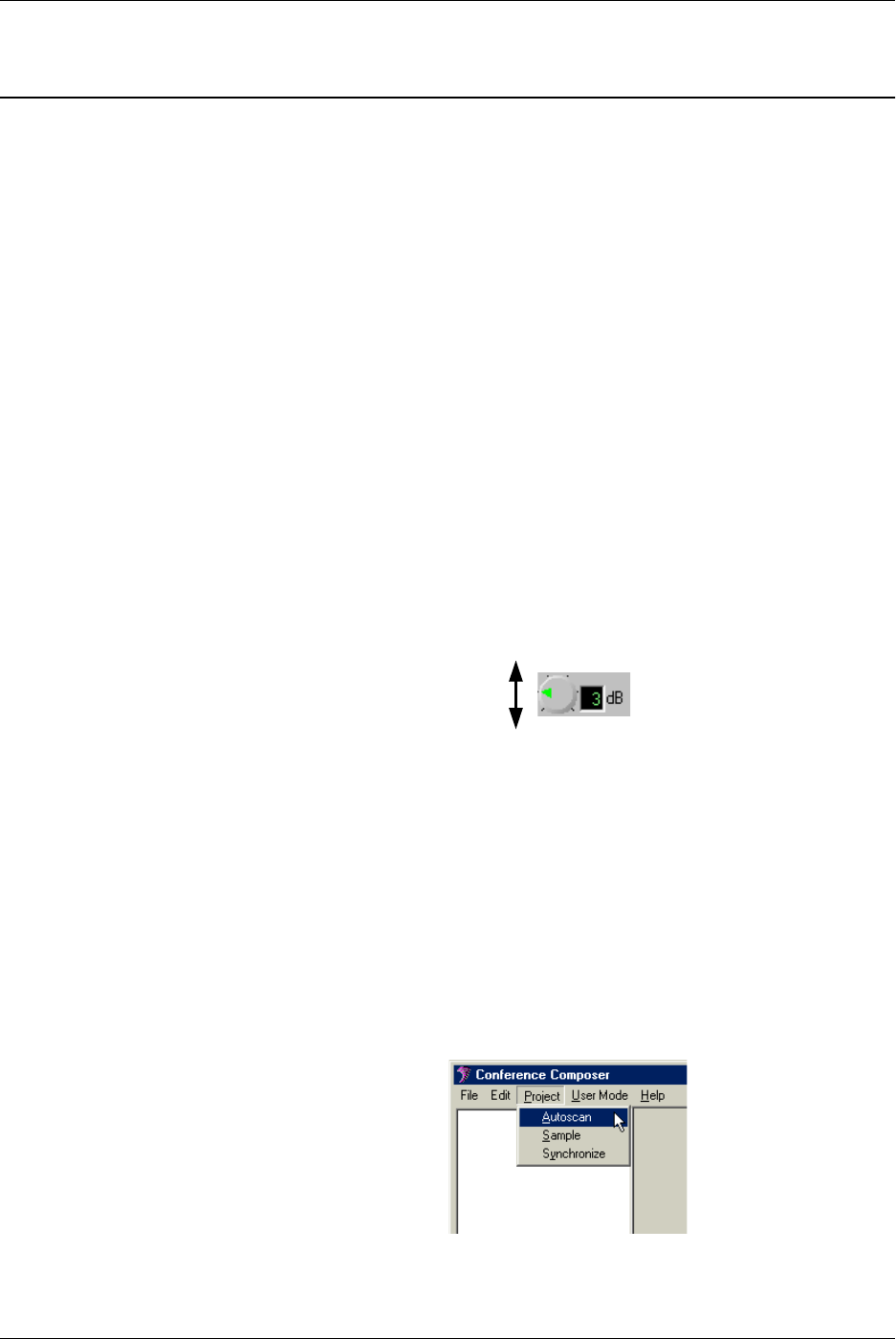
OPERATING CONFERENCE COMPOSER
© Polycom, Inc. 5 Conference Composer User Guide
OPERATING CONFERENCE COMPOSER
Conference Composer may either be operated online or off-line (not connected to a
Vortex or EF device) depending on how you would like to use it. If you work off-line
it is easy to save the settings to a file, share the files with others, and then upload the
settings into an EF device when you go online. The online or off-line operation of
Conference Composer is the same, although if you are operating off-line you will
need to add devices to the project before you can start working with the devices.
Conference Composer organizes your projects into a hierarchy of P
ROJECT
, D
EVICE
C
HAIN
, and D
EVICE
. Starting from the bottom of the list, a D
EVICE
is simply that –
some piece of equipment that will be used in the installation. A D
EVICE
C
HAIN
is a
collection of devices that are linked together through the ASPI Bus or EF Bus (that’s
where the name device chain comes from). Typically these represent all the devices
that are tied to a particular serial port on your computer/controller. The P
ROJECT
rep-
resents a collection of D
EVICE
C
HAINS
. You can think of the P
ROJECTS
as directories,
the D
EVICE
C
HAINS
as files and the D
EVICES
as items in the files.
There are many different buttons and knobs that allow the user to change settings on
the device. Conference Composer’s convention is that a feature associated with a but-
ton is enabled when the button’s LED is lit. To use a knob, click on the knob and
while holding down the mouse button, raise or lower the cursor to increase or
decrease the knob value..
ONLINE: CONNECTED
TO AN EF DEVICE
To operate online, the EF Device should be connected to an RS-232 port of your host
computer. The first step is to have Conference Composer scan your EF Device -- this
ensures the settings you see on the PC screen are exactly the settings in the device. To
do this, select the A
UTOSCAN
option from the P
ROJECT
menu as shown in Figure 3.
This ensures the settings you see on the PC screen are exactly the settings in the
device.
Figure 2. To increase the level, click on the knob and move the cursor UP. To
decrease the level, click on the knob and move the cursor DOWN.
